Content hub tools: what are they and why do you need them?
unlock efficient content management and harness their potential to elevate your brand's content strategy.
Imagine your content as a scattered collection of puzzle pieces—blogs here, videos there, social media posts everywhere. It's like embarking on a never-ending treasure hunt, and not the exhilarating kind.
But fret not! Enter the content hub, your hero in shining armor. It swoops in to rescue you from this chaotic mess, like a professional organizer on steroids.
By centralizing everything in one place, the content hub becomes the ultimate puzzle board. The content hub streamlines your operations, saving you precious time and effort. It's as if you have your very own Jarvis, the genius AI assistant, working tirelessly to make you work smarter, not harder.
With the content hub at your side, you can create a cohesive and captivating experience for your audience. No more hunting down scattered content. Instead, they can enjoy a seamless journey, effortlessly navigating through your carefully curated collection.
So, buckle up and let the content hub transform your content chaos into a masterpiece of organization and efficiency.
Content Hub use cases:
A content hub plays a crucial role in various aspects of content management, knowledge management, project management, event management, and resource center. Here's how a content hub can help in each of these areas:
Content Management:
A content hub provides a centralized platform where you can store, organize, and manage your digital content. It streamlines content creation, editing, and publishing processes, allowing you to maintain a consistent brand voice and style.
With a content hub, you can easily categorize and tag content, making it easier to search and retrieve relevant information. It also facilitates version control, ensuring that the latest and most accurate content is available to your team and audience.
Knowledge Management:
A content hub acts as a repository for knowledge and information within an organization. It allows you to create and store various types of content, such as documents, manuals, best practices, and training materials.
With a content hub, you can capture and organize tacit knowledge, making it easily accessible to employees. It promotes knowledge sharing and collaboration, enabling teams to contribute, update, and access information in a centralized and structured manner.
Project Management:
In project management, a content hub serves as a central hub of project-related information and resources. It allows team members to collaborate, share project updates, and access relevant files and documents.
A content hub streamlines communication by providing a single source of truth, ensuring that all project stakeholders have access to the latest information. It facilitates task management, deadlines tracking, and progress monitoring, enhancing project coordination and efficiency.
Resource Center:
A content hub can serve as a resource center where you can store and organize valuable resources for your audience. It allows you to create and curate content such as whitepapers, case studies, e-books, and video tutorials.
With a content hub, you can categorize resources by topic, industry, or format, making it easier for your audience to find relevant information. It also enables you to track resource usage, analyze engagement metrics, and gather valuable insights to improve your resource center's effectiveness.
Event Management:
For event management, a content hub acts as a central repository for event-related information and resources. It enables event organizers to store event details, schedules, speaker bios, promotional materials, and registration forms.
A content hub simplifies event content management by providing a single platform to update and distribute event-related materials. It also facilitates collaboration among event teams, streamlining communication, and ensuring everyone has access to the most up-to-date event content.
In summary, a content hub acts as a centralized platform that supports content management, knowledge management, project management, event management, and resource center functions. It provides a structured and organized approach to content and information management, enhancing collaboration, efficiency, and accessibility across various domains.
Exploring Content Hub Tools for Holistic Organizational Support:
Content hub tools drive a paradigm shift in content management, knowledge sharing, and collaboration across organizations. These centralized platforms unlock enhanced productivity, innovation, and efficiency.
We delve into leading tools that elevate knowledge management, project collaboration, event management, customer support, and content centralization. lets explore how these tools empower organizations to achieve their goals and revolutionize management embark on a transformative journey of discovery and growth.
Paperflite: Deal Winning Content Hands, Every Time!
Paperflite is a content management platform that serves as a centralized content hub for organizations. It focuses on streamlining content management, distribution, and engagement. Its key features include:
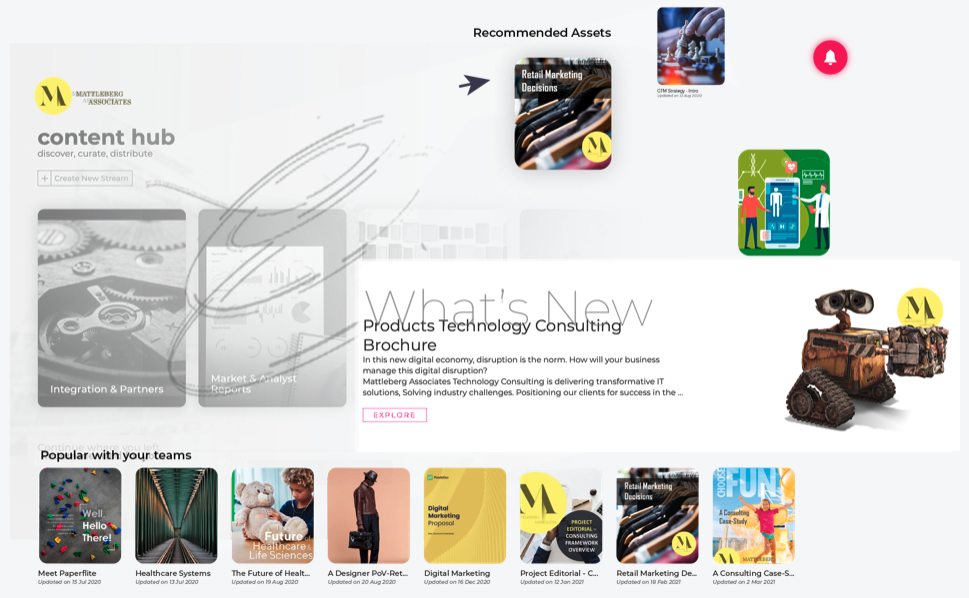
- Content Organization and Management: Paperflite allows users to organize and categorize content assets such as documents, videos, and presentations in a structured manner, making it easy to find and manage content resources.
- Personalized Content Experiences: Users can have personalized content experiences by tailoring content recommendations based on user preferences, browsing behavior, and engagement history, thereby enhancing customer engagement and driving conversions.
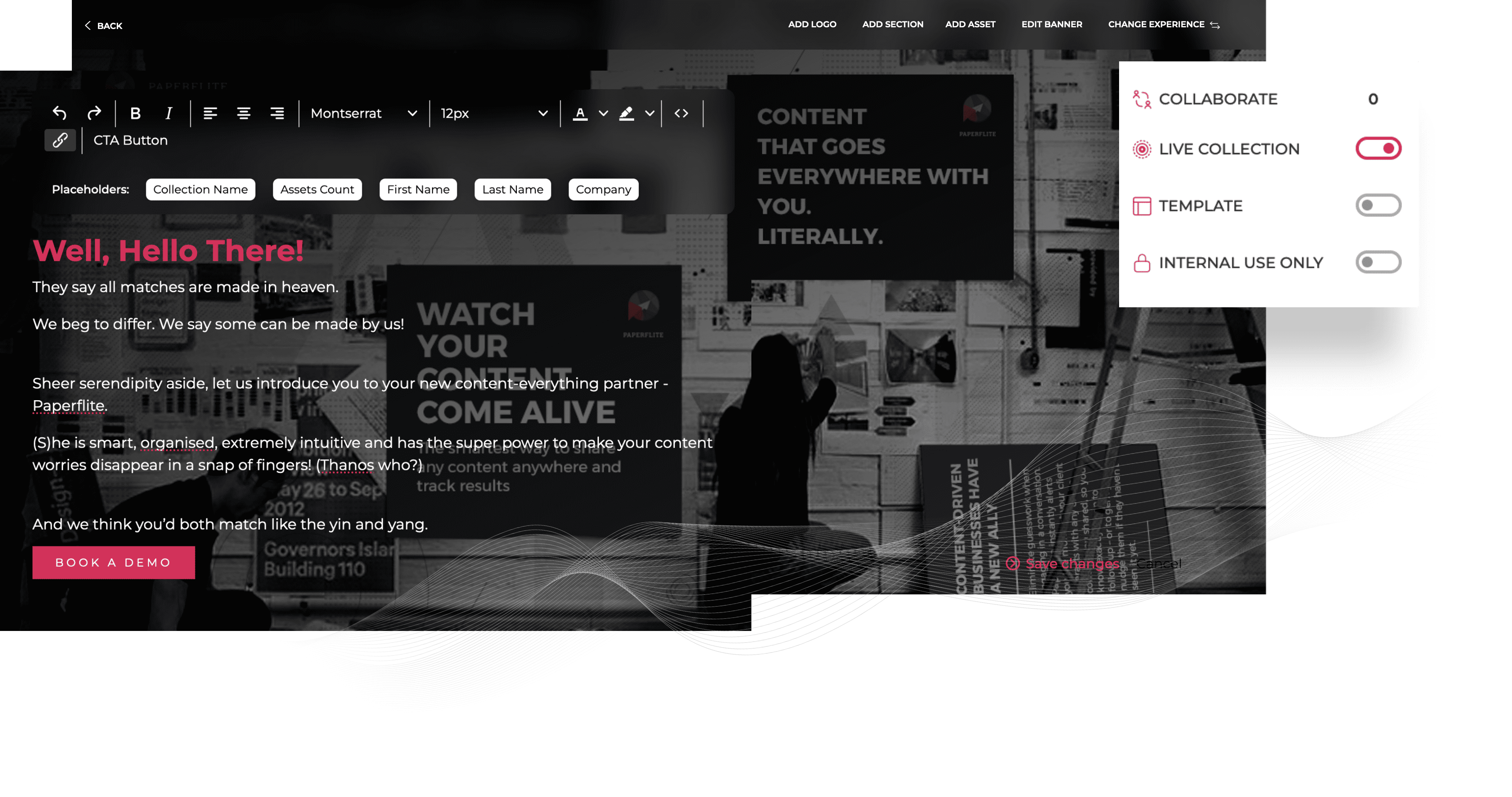
- Content Analytics and Insights: Paperflite provides detailed analytics and insights on content performance, including views, engagement, and downloads. This data helps organizations measure the effectiveness of their content and make informed decisions to optimize their content strategy.

HubSpot: Fuel Your Inbound Marketing with a Powerful Content Hub
HubSpot offers an all-in-one marketing platform that includes content management features as part of its comprehensive suite of marketing tools. Its content hub features are designed to support inbound marketing strategies. Key features include:
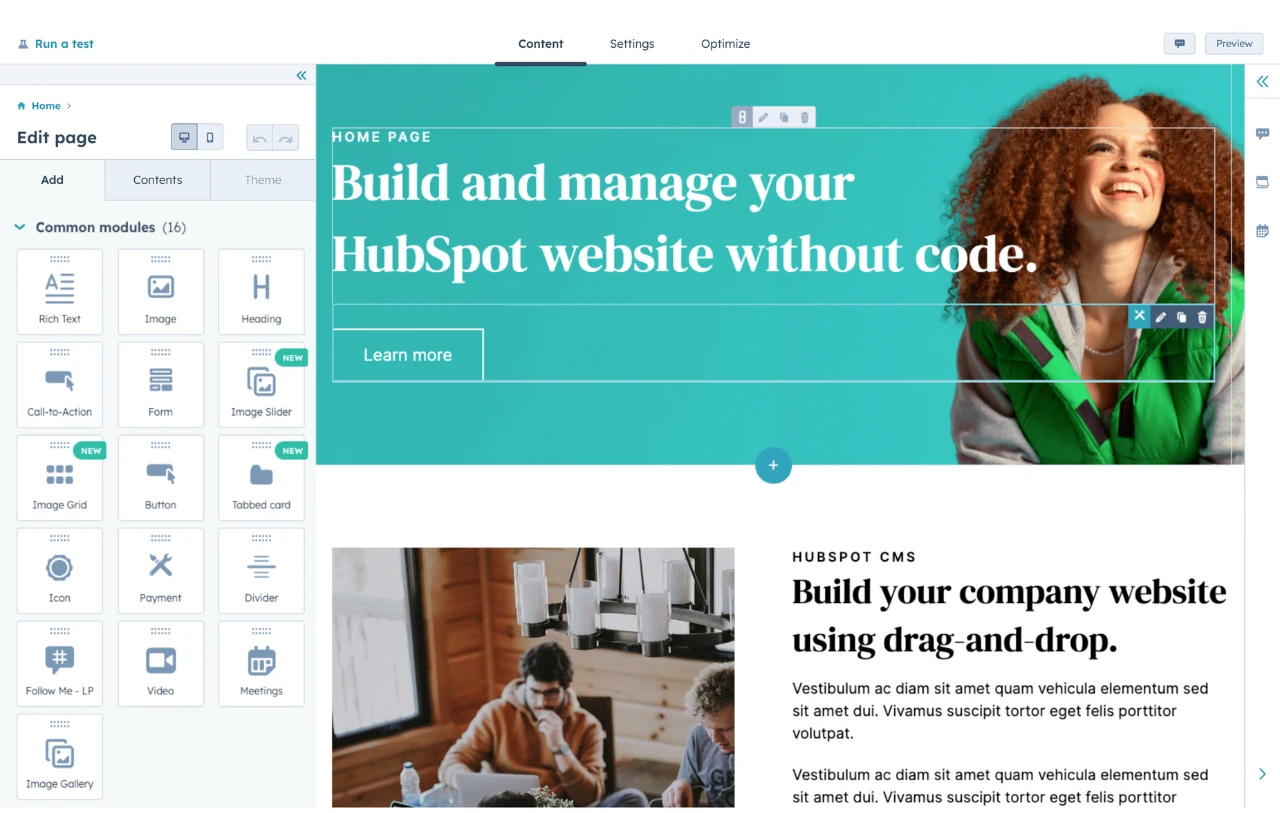
- Content Creation and Management: HubSpot provides a user-friendly interface for creating and managing various types of content, including blog posts, landing pages, etc. It offers templates, drag-and-drop editors, and scheduling options for easy content management.
- Content Distribution and Promotion: HubSpot allows users to distribute content across multiple channels, including websites, social media, and email campaigns. It provides tools for scheduling and promoting content to reach the target audience effectively.
- Lead Generation and Conversion: HubSpot's content hub is integrated with marketing automation features that help capture leads, nurture them through personalized content experiences, and convert them into customers. It offers lead capture forms, lead scoring, and email automation capabilities.
Cleverstory: Unleash Your Creativity, Captivate Your Audience
Cleverstory is an interactive content creation software designed for marketing professionals who want to create custom web experiences for prospects and move them through the buying journey. Empowers you to build resource hubs, serving as content hubs that store and showcase valuable information. Explore its remarkable features that enable you to create impactful content experiences:

- Asset Cards: Effortlessly arrange and present a variety of content formats, including PDFs, videos, landing pages, blogs, images, and presentations. With Cleverstory's asset cards, you can captivate your audience and provide an engaging visual experience.
- Content Journey: You have the power to carefully craft the content journey for your end users by setting up a predefined path that guides their experience. With this capability, you can gently nudge them in the right direction, ensuring that their journey is both purposeful and meaningful.
- Asset Gating and Lead Tracking: By strategically gating your assets, Cleverstory enables you to gather valuable prospect information and track their engagement. Seamlessly capture leads and measure the effectiveness of your content in driving conversions.
Experience the power of Cleverstory's features as you create compelling resource center hubs. Elevate your content engagement with Cleverstory, where resource hubs come alive and captivate your audience's attention.
Make Content That Is Bingeable And Not Boring
Wordpress: Unleash Your Content's Full Potential
WordPress, the widely-used content management system (CMS) that offers a versatile and customizable platform for seamless content creation and management. With its robust content hub features, WordPress empowers you to:
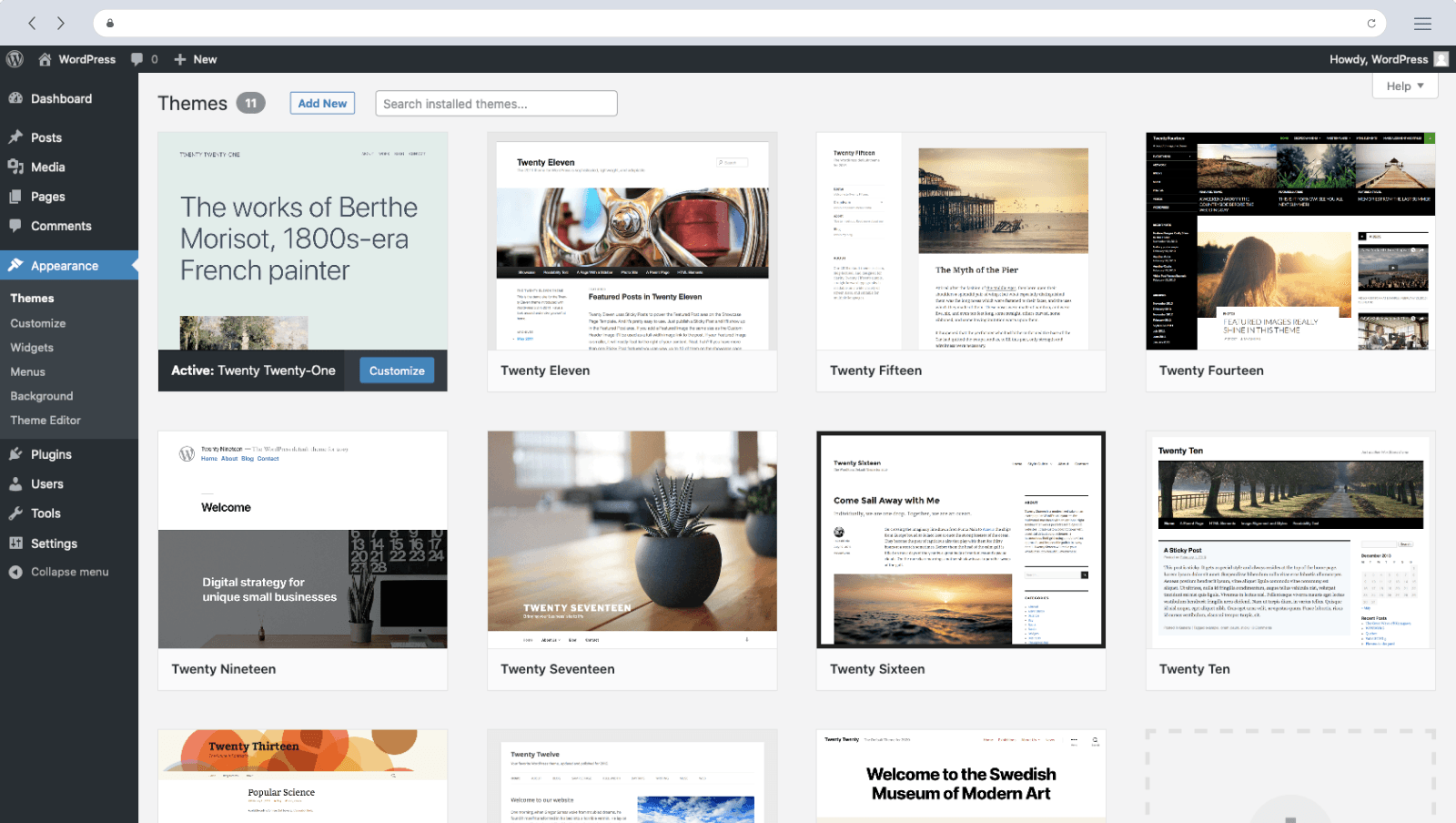
- Create and Customize: Experience a user-friendly editor with a diverse range of formatting options, seamless multimedia integration, and the ability to effortlessly create and publish various content types. Themes and plugins provide customization options, enabling you to craft unique content experiences.
- Organize and Manage: Benefit from a flexible content organization system utilizing categories, tags, and custom taxonomies. Effectively manage content assets, schedule posts, and moderate comments for a streamlined workflow.
- Publish and Distribute: Simplify the publishing process on your website, taking full control of content visibility, scheduling posts for future publication, and managing revisions. With support for various distribution options like RSS feeds and social media integrations, WordPress amplifies your reach and engages a wider audience.
Confluence: Collaborate, Create, Conquer: Unleash the Power of Knowledge with Confluence
Confluence is a collaboration and knowledge management software developed by Atlassian. It serves as a centralized platform for teams to create, organize, and share information within an organization. Confluence facilitates effective collaboration, content creation, and knowledge sharing among team members. And the key features of confluence are:
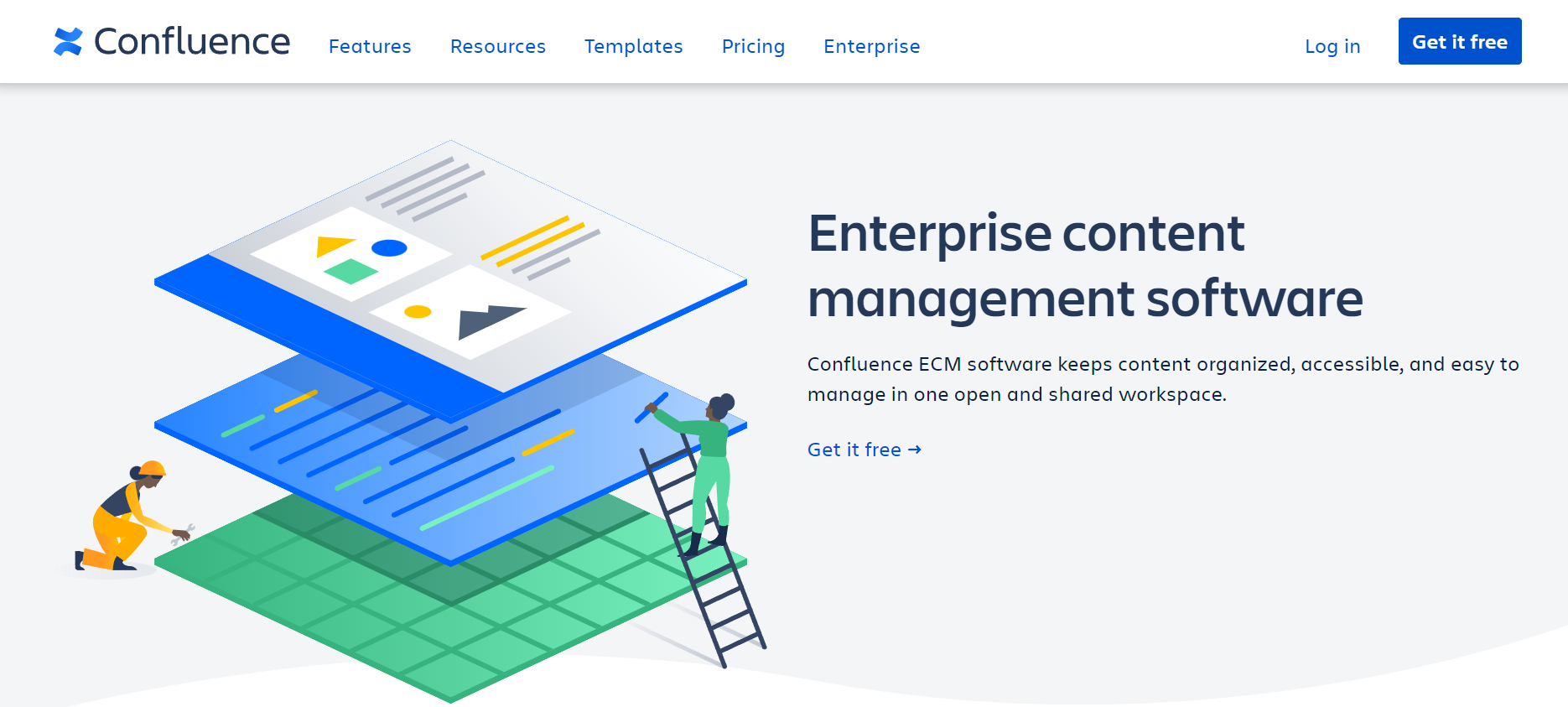
- Document Creation and Editing: Confluence provides a user-friendly editor that allows users to create and edit various types of content, such as documents, meeting notes, project plans, and knowledge articles. It offers formatting options, tables, images, and attachments to enhance content creation.
- Knowledge Sharing and Searchability: Confluence serves as a knowledge repository, allowing users to share information and best practices. It provides robust search capabilities, making it easy to find relevant content, pages, and attachments, promoting knowledge discovery and sharing.
- Integration and Extensions: Confluence integrates with other tools and platforms, such as Jira, Trello, and Microsoft Office, enhancing productivity and enabling seamless workflow management. It also offers a marketplace of add-ons and plugins to extend its functionality and customization options.
Content hubs are powerful tools that revolutionize content management, knowledge sharing, collaboration, and organization across various domains. They provide centralized platforms for storing, managing, and distributing content, leading to increased productivity, streamlined workflows, and improved audience engagement.
Whether it's for content marketing, project management, event management, customer support, or knowledge management, content hubs offer a range of features and benefits tailored to specific needs.
From popular tools like HubSpot, WordPress, Confluence, to specialized solutions like Paperflite and Cleverstory, each content hub brings unique capabilities to enhance content creation, organization, and distribution. Embracing these content hub solutions empowers organizations to optimize their content strategies, improve collaboration, and drive meaningful outcomes.
